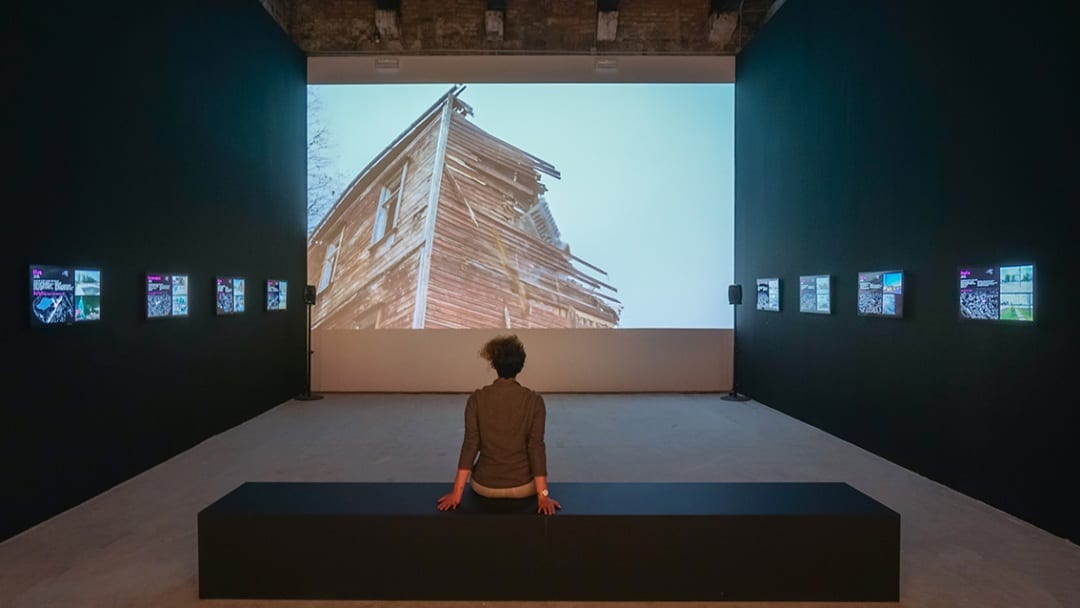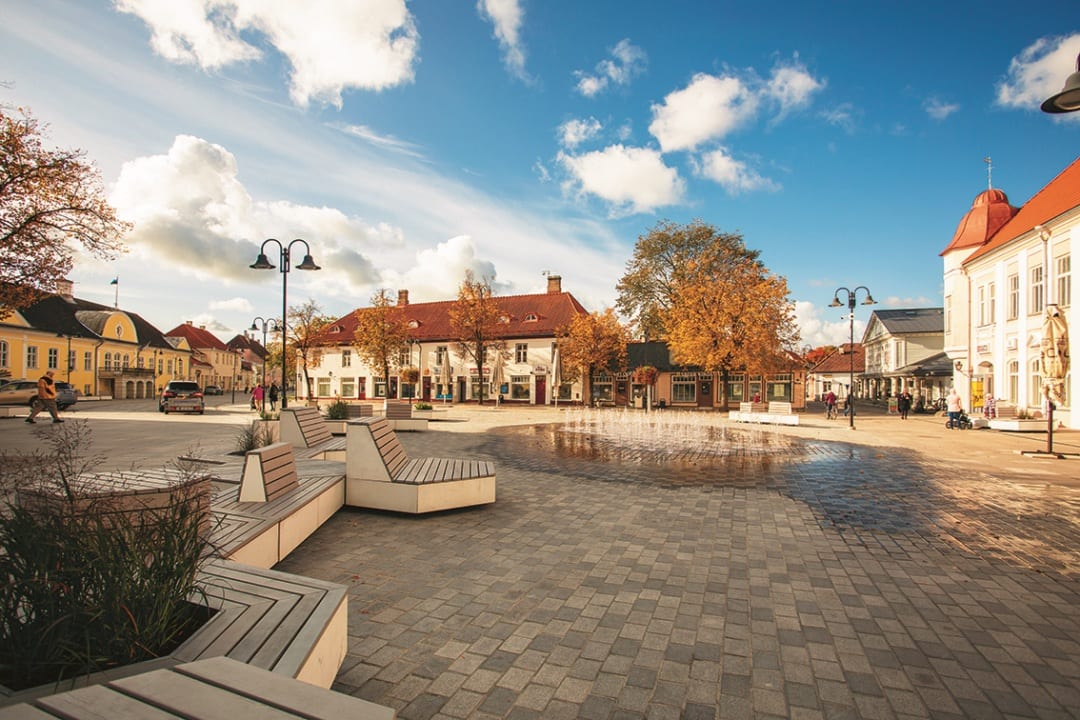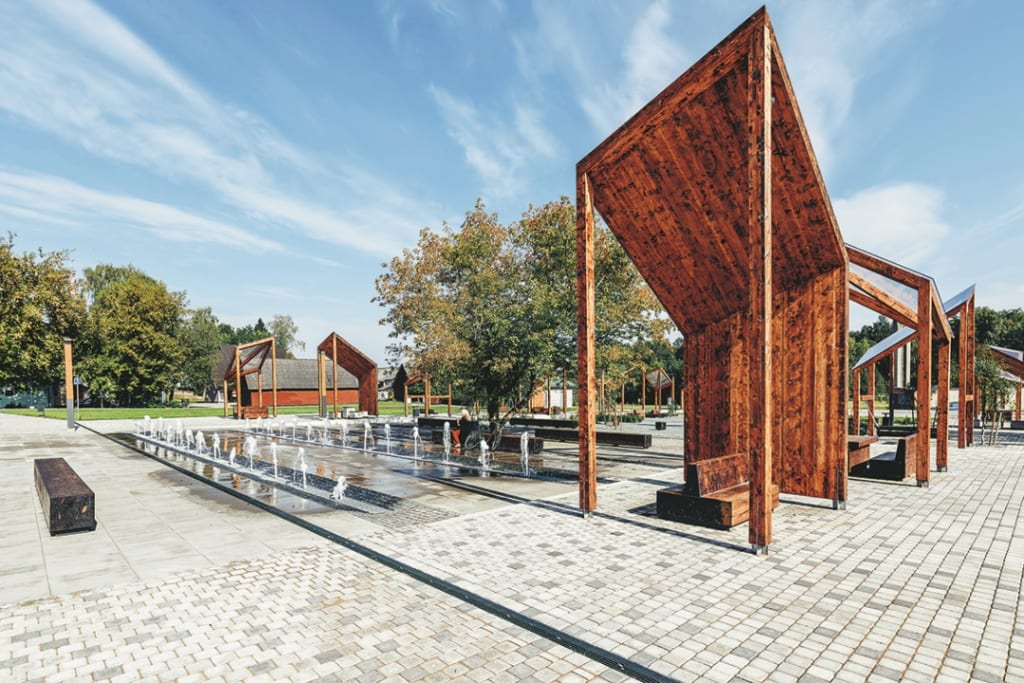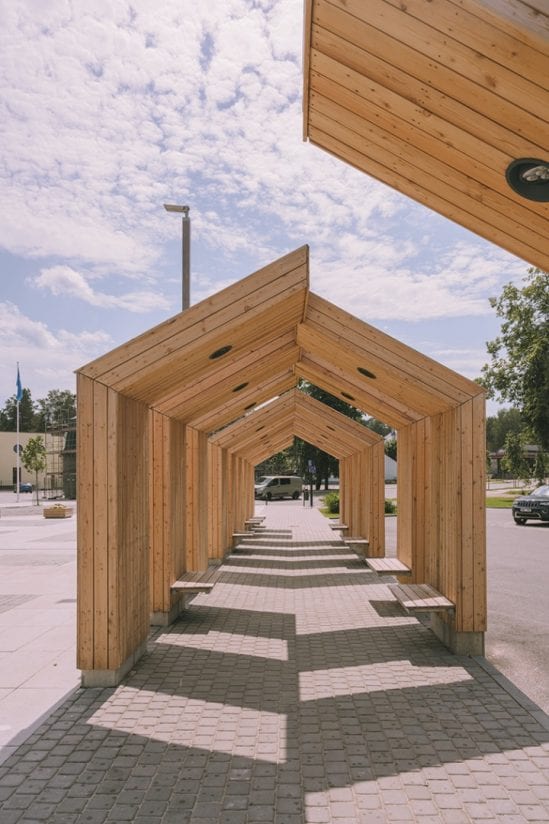Solutions for Shrinking Cities at the Venice Biennale
The Estonian Centre for Architecture presented the exhibition “Square! Positively shrinking” curated by Jiří Tintěra, Garri Raagmaa, Kalle Vellevoog, Martin Pedanik, and Paulina Pähn in the Pavilion of Estonia at the 17th International Architecture Exhibition of La Biennale di Venezia hosted in the Arsenale complex.
Exploring the role of high-quality urban space in enhancing the future development of small towns that are in jeopardy of depopulation, the exhibition sparks a debate on the lesser-known facet of urbanisation.
“The causes of population decline are global, but the consequences are local. One way to combat this phenomenon is to focus on improving the quality of life of the population and strengthening local awareness and identity. Our message is that quality urban space has a key role to play in this and cities and architects can do a lot,” asserts the Estonian team of curators.
The phenomenon of shrinking cities is widespread throughout Europe and as a consequence of fundamental changes during the transition in 1989/1991, post-socialist Eastern Europe is strongly affected. The influence of urbanisation and suburbanisation processes on local communities often has a greater impact than out-migration or low birth rates at the national level. As a result, 45 in 47 Estonian towns have lost a significant percentage of their population since 2000.
The most visible symptoms of shrinkage in urban space are building vacancies and brownfields, the predominantly low quality of residential premises, unsightly dilapidated buildings and an underinvested environment, which negatively impact residents and amplifies the vicious circle of decline.
While questioning the social, economic and environmental implications of de-urbanisation, “Square! Positively shrinking” showcases solutions to shape the renewed identity of shrinking cities via building demolitions, active housing policies, historic building restoration and urban space revitalisation.

The exhibition “Square! positively shrinking” that explores the role of high-quality urban space in enhancing the future development perspective of depopulating small towns.
The exhibition, in which video screenings play a central role, focuses on “Great Public Spaces” (Hea avalik ruum), organised within the framework of the Estonia 100 Architecture Programme, a remarkable example of urban space intervention in shrinking cities. Conceived on the occasion of the country’s 100th anniversary, the initiative aimed to regenerate the centres and public spaces of 15 Estonian towns by 2020.
“Great Public Spaces”, presented in the exhibition, is a remarkable example of urban space revitalisation in shrinking urban areas. The aim of the programme was to renew the centres, main squares as well as main streets in Estonian towns by 2020 as a gift from architects to the Republic of Estonia celebrating its 100th anniversary.
“None of the presented activities is able to change the future perspective of the shrinking towns alone and even together they compose only a part of the urban revitalisation strategies to overcome the outcomes of population shrinkage. But they need to be addressed. The quality and attractiveness of urban space matters, especially in shrinking communities that need to be visited,” say the curators.
Town centre squares in Tõrva, Põlva, Valga and Rapla were completed in 2018, further squares were regenerated in Võru and Kuressaare in 2019, and others in Elva and Rakvere were completed in 2020.
The Biennale Architettura 2021 is curated by Lebanese architect Hashim Sarkis under the theme “How Will We Live Together?”, and encourages curators to consider how architecture can address global challenges that require coordinated action. In this sense, the Estonian exhibition responds to Sarkis’ call for pavilions: “The demand for a good living environment is growing, no matter where and how we will live together. The project “Square! Positively shrinking” helps to raise awareness of the architect’s important role and responsibility in defending the quality of our common living environment” explain the curators.
As the COVID-19 pandemic has completely changed our lives, the debate becomes even more urgent: “The real value of something becomes apparent when we lose it” adds Raul Järg, Commissioner of the Estonian Pavilion “today’s circumstances have vividly demonstrated the human need for face-to-face interaction, and also the quality of space where this interaction could happen.”
CREDITS & PARTNERS
Exhibition: “Square! Positively shrinking”
Location: Arsenale — La Biennale di Venezia
Curators: Jiří Tintěra, Garri Raagmaa, Kalle Vellevoog, Martin Pedanik, Paulina Pähn
Commissioner: Raul Järg (Estonian Centre for Architecture)
Production: Eve Arpo, Maria Kristiin Peterson, Ragne Soosalu (Estonian Centre for Architecture)







